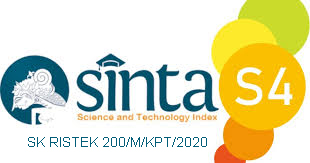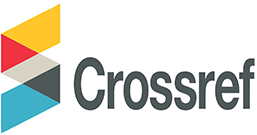Design a Screencast Video for Software Learning in Higher Education (Case Study: Tutorial Video for Digital Illustration Course)
Abstract
In Indonesian higher-education, the lecturer usually teaches software learning to students through a face-to-face practicum at a computer laboratory. However, in some conditions, these learning methods may not be carried out and must be done by online learning methods. Therefore, appropriate learning media are needed to accommodate them. One of the most suitable alternative media is using video with screencasting. A screencast is recordings that show the activity of mouse, tablet, or stylus and the computer screen. Instructional and demonstration videos that must show computer screen activity commonly use screencast technology. This research study the design process and the validation of the use of educational screencast for learning software in higher education. The case study is a screencast video for the Digital Illustration course in the Design of Visual Communication major at Trilogi University. The design methods for developing screencast videos uses the multimedia development model assisted by four-step screen capture processes. After that, the students enrolled in the Digital Illustration course watch the published video, and then the questionnaire was given to them to see the result of the research. The finding of this research produces some recommendations on how to design a screencast video. A lecturer who considers using screencast to design a learning software tutorial video may consider some recommendations found in this study.
Keywords
Full Text:
PDFReferences
A. Hansch, L. Hillers, K. McConachie, C. Newman, T. Schildhauer, and J. P. Schmidt, “Video and Online Learning: Critical Reflections and Findings from the Field,” HIIG Discussion Paper Series, no. 2015–02, 2015.
Z. Woolfitt, “The effective use of video in higher education,” Lectoraat Teaching, Learning and Technology Inholland University of Applied Sciences, 2015.
C. J. Brame, “Effective educational videos: Principles and guidelines for maximizing student learning from video content,” CBE Life Sciences Education, vol. 15, no. 4, p. es6, 2016.
A. P. Sullivan, G. Alan Davis, and J. C. Stewart, “Edtech Effectiveness: Using Screencasts to Increase Learning Outcomes in Information Systems Curriculu,” Issues in Information Systems, vol. 19, no. 1, pp. 210–217, 2018.
A. Andini, S. Sulton, and Y. Soepriyanto, “Pengembangan Screencast untuk BelajarSoftware Animasi 3D,” JKTP: Jurnal Kajian Teknologi Pendidikan, vol. 2, no. 4, pp. 297–305, 2019.
Y. Ghilay and R. Ghilay, “Computer Courses in Higher-Education: Improving Learning by Screencast Technology,” i-manager’s Journal of Educational Technology, vol. 11, no. 4, pp. 15– 26, 2015.
Y. Ghilay, “Math Courses in Higher Education: Improving Learning by Screencast Technology,” Journal on Education, vol. 4, no. 2, pp. 1–6, 2017.
W. W. Lee and D. L. Owens, Multimedia-Based Instructional Design: Computer-based Training, Web-based Training, Distance Broadcast Training, Performance-based Solutions. 2004.
D. Raftery, “Developing Educational Screencasts,” in Critical Design and Effective Tools for E-Learning in Higher Education, USA: IGI Global: Engineering Science Reference, 2010, pp. 213–226.
S. Arikunto, Metode Penelitian. Rineka Cipta, 2010.
P. J. Guo, J. Kim, and R. Rubin, “How video production affects student engagement: An empirical study of MOOC videos,” in Proceedings of the first ACM conference on Learning@ scale conference, 2014, pp. 41–50.
A. Z. Mohamad Ali, K. Samsudin, M. Hassan, and S. F. Sidek, “Does screencast teaching software application needs narration for effective learning?,” Turkish Online Journal of Educational Technology, vol. 10, no. 3, pp. 76–82, 2011.
DOI: https://doi.org/10.31326/jisa.v3i1.638
Refbacks
- There are currently no refbacks.
Copyright (c) 2020 Vidya Kharishma

This work is licensed under a Creative Commons Attribution-ShareAlike 4.0 International License.
JOURNAL IDENTITY
Journal Name: JISA (Jurnal Informatika dan Sains)
e-ISSN: 2614-8404, p-ISSN: 2776-3234
Publisher: Program Studi Teknik Informatika Universitas Trilogi
Publication Schedule: June and December
Language: English
APC: The Journal Charges Fees for Publishing
Indexing: EBSCO , DOAJ, Google Scholar, Arsip Relawan Jurnal Indonesia, Directory of Research Journals Indexing, Index Copernicus International, PKP Index, Science and Technology Index (SINTA, S4) , Garuda Index
OAI address: http://trilogi.ac.id/journal/ks/index.php/JISA/oai
Contact: jisa@trilogi.ac.id
Sponsored by: DOI – Digital Object Identifier Crossref, Universitas Trilogi
In Collaboration With: Indonesian Artificial Intelligent Ecosystem(IAIE), Relawan Jurnal Indonesia, Jurnal Teknologi dan Sistem Komputer (JTSiskom)
JISA (Jurnal Informatika dan Sains) is Published by Program Studi Teknik Informatika, Universitas Trilogi under Creative Commons Attribution-ShareAlike 4.0 International License.


















